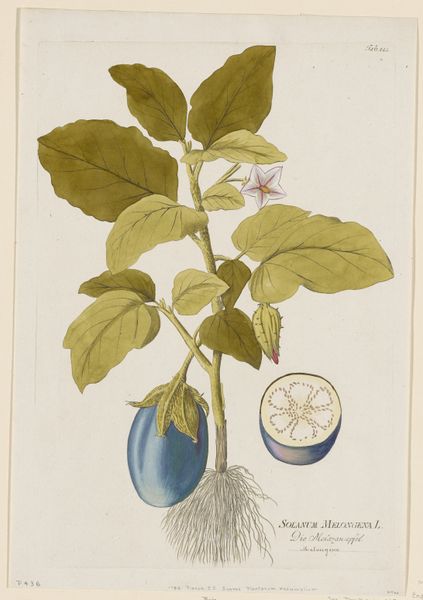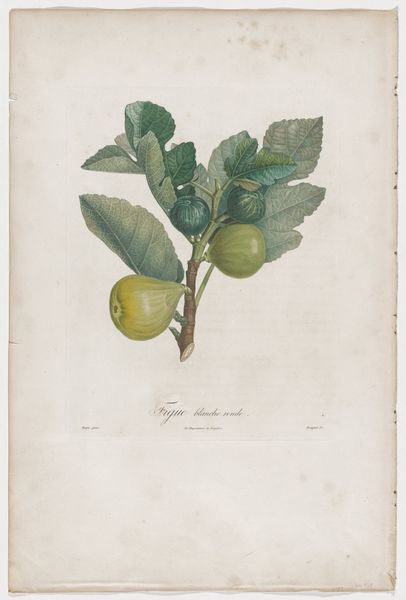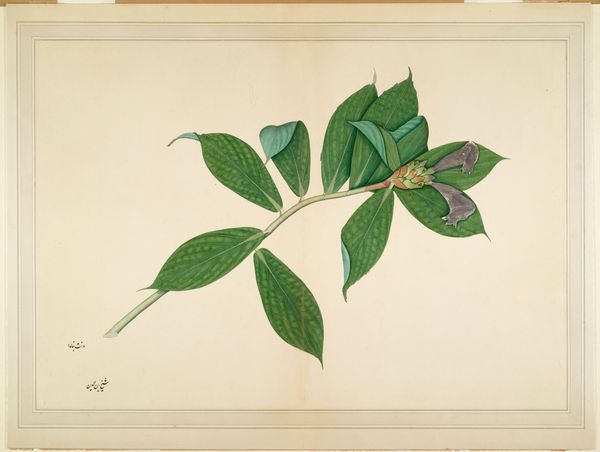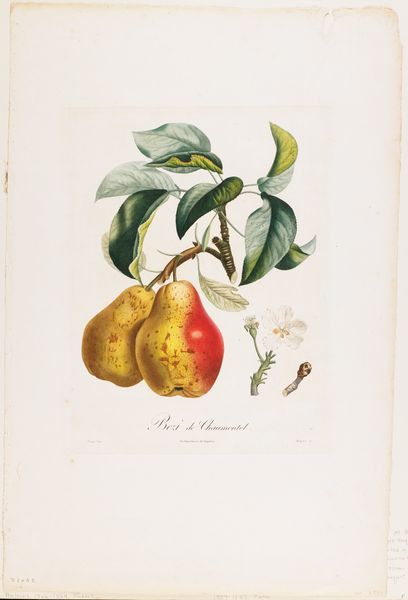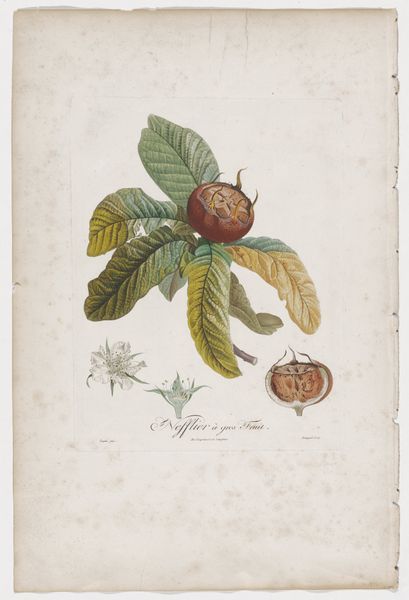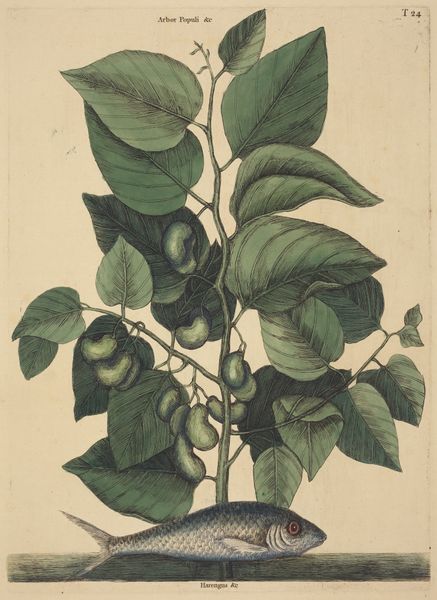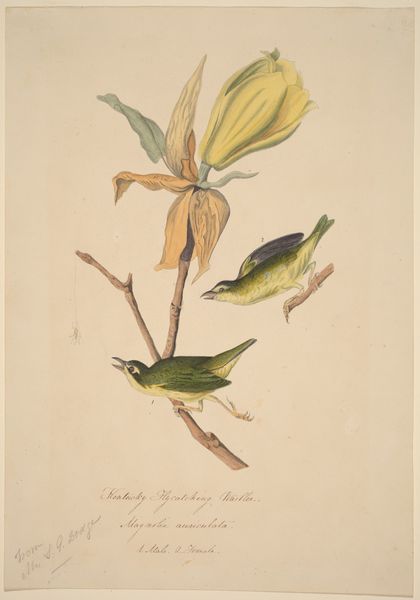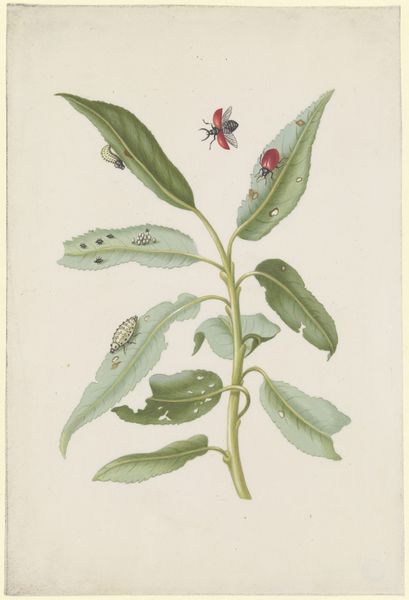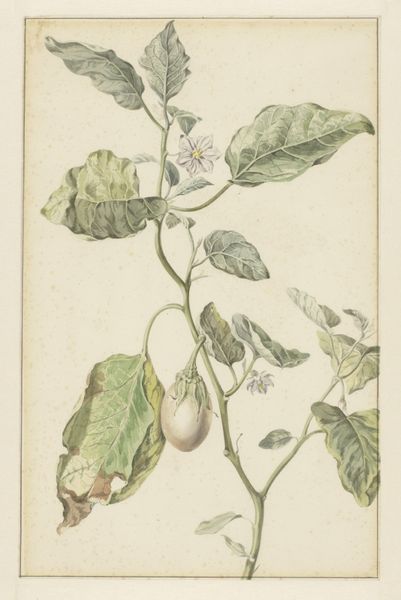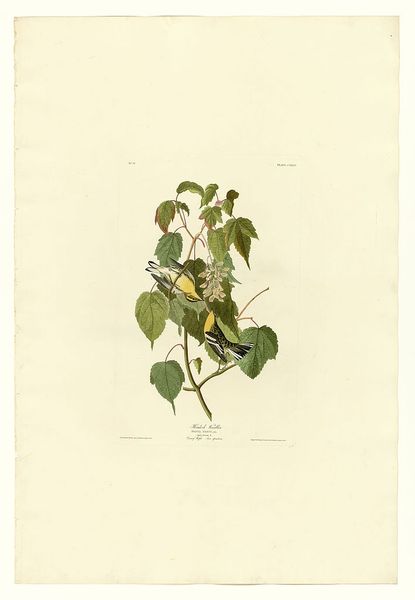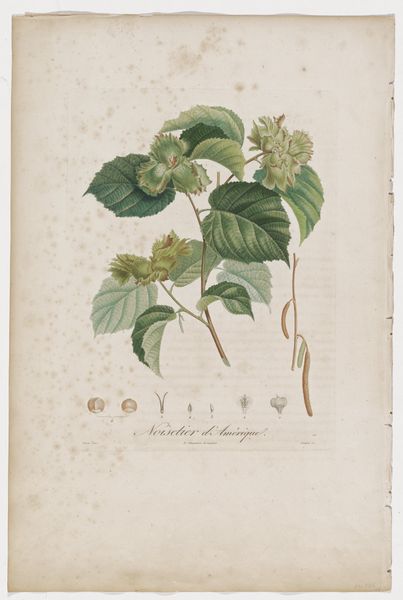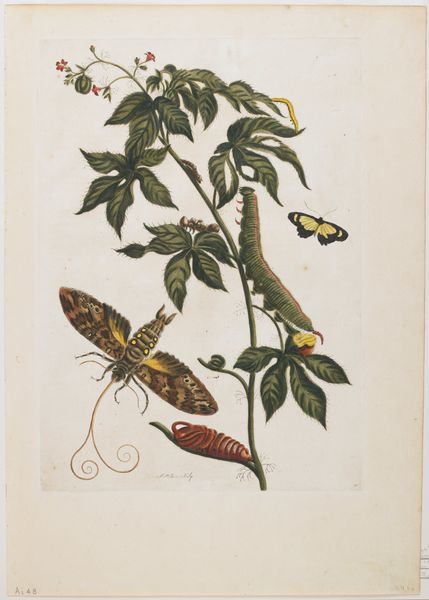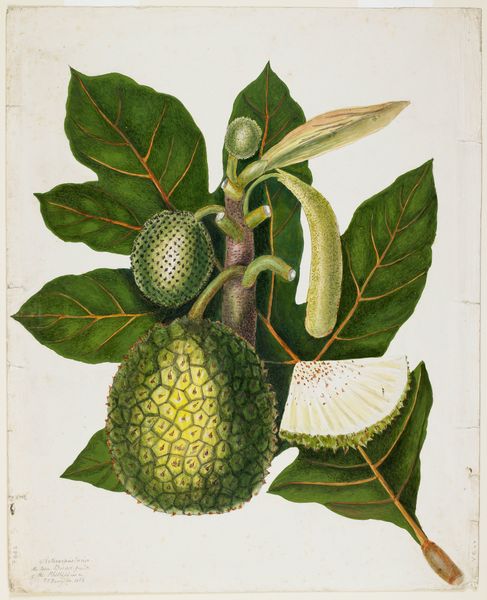
hand-colored-etching, print, engraving
#
hand-colored-etching
# print
#
15_18th-century
#
watercolour illustration
#
engraving
#
botanical art
Dimensions: 13 3/4 x 10 in. (34.93 x 25.4 cm) (sheet)
Copyright: Public Domain
Curator: Take a moment to observe "Citrus Fruit and Beetle," a hand-colored etching crafted sometime between 1705 and 1771. This work, found here at the Minneapolis Institute of Art, showcases a meticulous blend of engraving and etching techniques to depict nature's intricacies. Editor: I am immediately struck by the composition – that enormous citrus fruit dwarfing everything else, yet teeming with insect life. There's a curious tension, a sort of hidden world bustling beneath an otherwise ordinary surface. Curator: Indeed. These natural history illustrations, common in the 18th century, served important purposes, acting as scientific records intended for classification and wider knowledge dissemination during the Enlightenment. The artist captured not only the fruit, likely for identifying unique species, but various stages of insect development as well, consider those almost hidden eggs! Editor: It’s fascinating to see how it merges science and aesthetics, and, frankly, there is also an imperialist agenda at play. These botanical studies were also inherently bound up in the politics of colonialism. The 'discovery' and classification of species helped fuel the economic expansion and scientific hubris of the era. I also keep wondering who got to name and control that 'discovery'... Curator: That is an interesting position. What this picture suggests to me is the idea that scientific discovery in art represents the ideals of control, of human agency and understanding over the natural world. Editor: Maybe. What I like most are the little hidden subversions to these big themes. For example, look how closely the insect mirrors the size and texture of the fruit. It feels like the balance between what we can control and the wild truth that there are far bigger actors and systems at play Curator: A very powerful and convincing reading. It's precisely through art and detailed investigation that we glean insights into the historical forces and world visions influencing society. Editor: Right, but by continually unpacking the complex and conflicting layers we prevent ourselves from falling into any nostalgic trap! Curator: Well, together we find a broader and more nuanced picture through an expanded reading of historical contexts. Editor: That is something that always holds appeal for me!
Comments
minneapolisinstituteofart almost 2 years ago
⋮
This large citron, Citrus medica (Linnaeus), grows as a shrub or tree to about twelve feet tall and was introduced to South America during the sixteenth or seventeenth centuries. Merian commented "They are candied; in Holland they are baked in gingerbread." The colorful insect is the Harlequin beetle, a species found from southern Mexico to northern Argentina. Merian admired it very much, saying; "The beautiful black beetle decorated with red and yellow flecks shown resting on the fruit was added on account of its rarity to complete and decorate the engraving, although I do not know its origin; I gladly leave it to others to investigate this creature further."
Join the conversation
Join millions of artists and users on Artera today and experience the ultimate creative platform.
